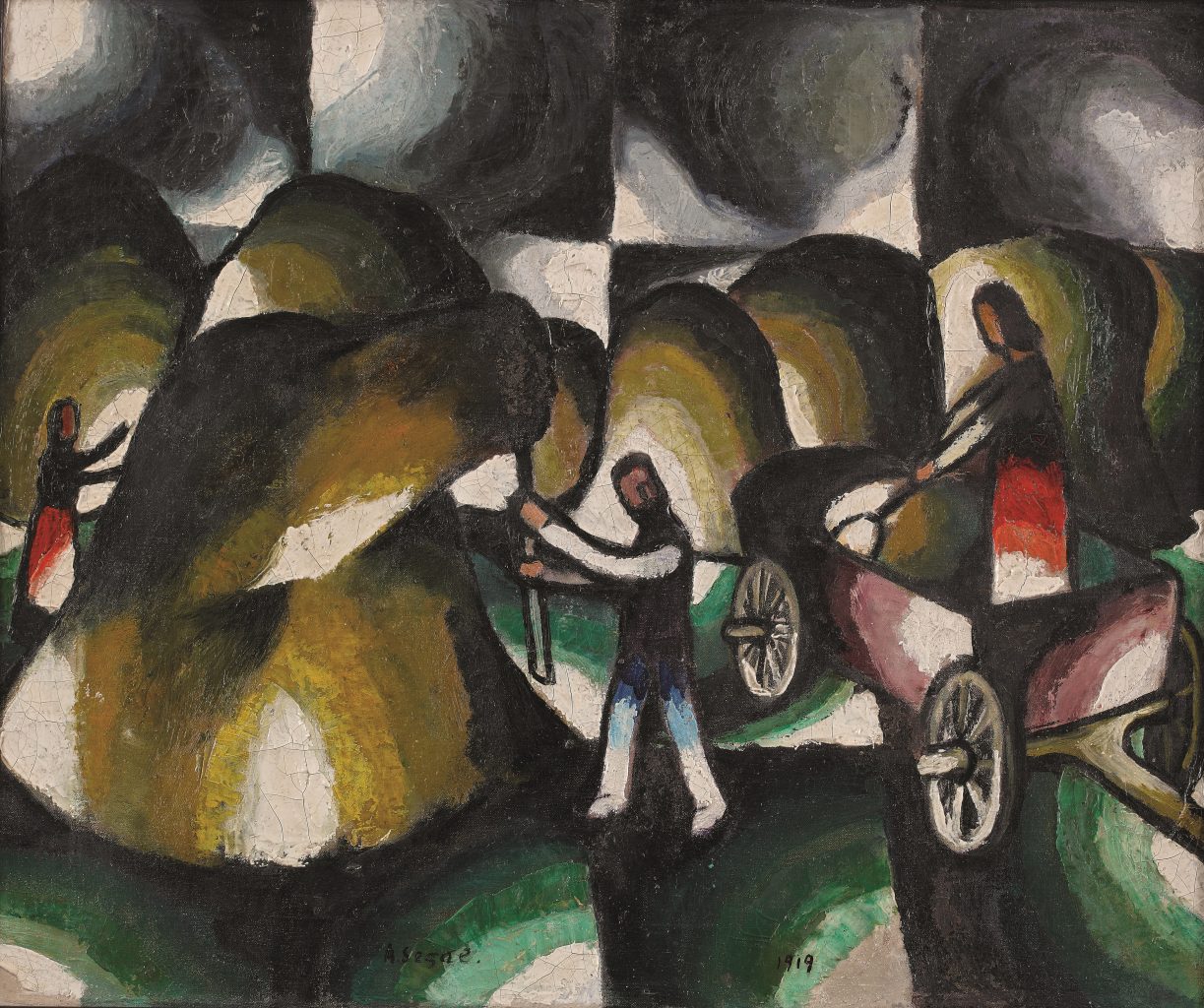Arthur Segal (1875-1944)
The Harvest (Cyclical Work) (Die heuernte [Zyklus Arbeit]), 1919
Oil on canvas
Courtesy of the Leonid and Tatiana Nevzlin Collection
Must Know
The Romanian born painter Arthur Segal moved to Berlin in 1904 where he exhibited his work with Die Brucke and Der Blaue Reiter, two leading German expressionist groups. After moving to Switzerland, he joined the Dada movement. During these years he formulated his method of “optical equivalence,” dividing pictures into geometric sections to generate geometric composition that intermingled alternating colors.
More Info
Arthur Segal was born in 1875 in Rumania. Artistic studies led him to Munich, Paris and Italy and Berlin where he exhibited with members of the two leading German Expressionist groups; Die Brucke and Der Blaue Reiter. With the outbreak of World War I in 1914, Segal moved with his family to neutral Switzerland where he remained until 1919, exhibiting with Arp and the Dada circle in Zurich.
Dada was an art movement formed during the First World War in Zurich in negative reaction to the horrors and folly of the war. Some sources propose a Romanian origin, arguing that Dada was an offshoot of a vibrant artistic tradition that transposed to Switzerland when a group of Jewish modernist artists, including Marcel Janco, and Arthur Segal settled in Zürich. Having left Germany and Romania during World War I, the artists arrived in politically neutral Switzerland. They used abstraction to fight against the social, political, and cultural ideas of that time.
Segal returned to Berlin in 1920 and subsequently became director of the Novembergruppe with whom he exhibited until 1932. His theory of equivalence changed the relationship between figure and background in the painting. The primacy of the figure was overturned and the unity of the painting’s surface stressed. Our work Die heuernte is a prime example of this theory as it is hard to tell what is foreground and what is background.
Because of his Jewish heritage and his degenerate artistic sensibilities, Arthur Segal was prevented from exhibiting in Germany and left in 1933, emigrating first to Spain, then settling in London where he died in 1944. he is considered by many as the father of the Jewish avant-garde art scene of his times, and known for believing in the moral and healing power of art.

